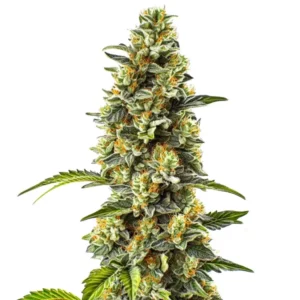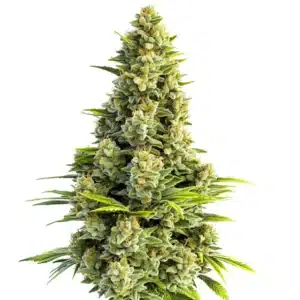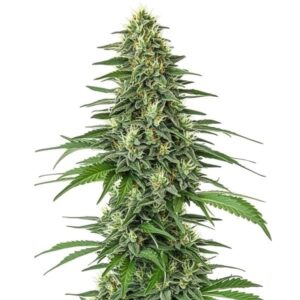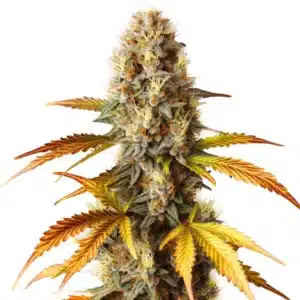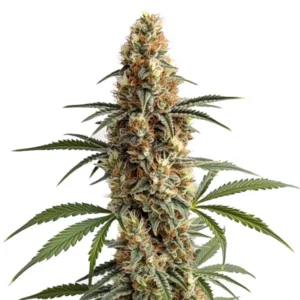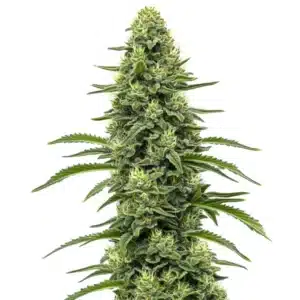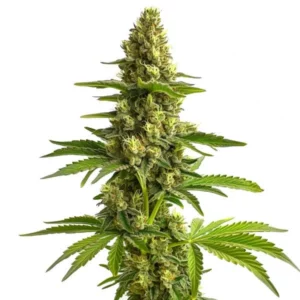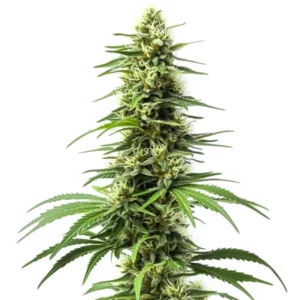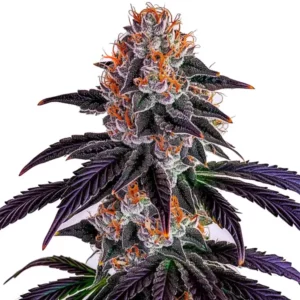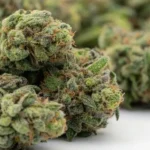
Myrcene, Limonene, Linalool Volatility
Myrcene, limonene, and linalool are aromatic compounds found in cannabis. These compounds are part of a larger group known as terpenes, which influence the scent and effect of cannabis strains. Understanding how these terpenes behave can enhance both cultivation and consumption experiences.
The volatility of myrcene, limonene, and linalool in essential oils plays a crucial role in determining their aroma and therapeutic benefits. Volatility refers to how easily these compounds evaporate into the air, affecting the intensity and duration of their scent. Temperature effects on myrcene, limonene, and linalool are significant, as heat can increase evaporation rates, altering the overall profile of the cannabis strain.
Recommended Strains
Strawberry Cough
|
|
THC | 19% - 23% (Medium) |
|
|
Type | Feminized |
|
|
Yield | Medium |
|
|
Phenotype | 30% Indica / 70% Sativa |
Blue Dream
|
|
THC | 17% - 24% (Medium) |
|
|
Type | Feminized |
|
|
Yield | High |
|
|
Phenotype | 50% Indica / 50% Sativa |
When growing cannabis, it’s essential to consider how myrcene, limonene, linalool volatility affects scent. For first-time growers, this means choosing the right strains and understanding how environmental factors can influence terpene profiles. For experienced cultivators, it offers an opportunity to fine-tune practices to highlight specific aromatic characteristics.
Temperature Effects on Terpene Volatility
Temperature is a major factor influencing the volatility of terpenes like myrcene, limonene, and linalool. Higher temperatures generally lead to increased evaporation rates, which can enhance or diminish the aromatic qualities of a cannabis strain. This is crucial for growers aiming to preserve the terpene profile of their plants.
For instance, keeping a controlled environment with optimal temperature settings can help maintain the desired balance of myrcene, limonene, and linalool. Strains like Blue Dream from Blimburn Seeds are known for their rich terpene profiles, making temperature management vital during the cultivation process.
Fluctuating temperatures can cause significant changes in the myrcene limonene linalool evaporation rates, potentially leading to a less desirable aromatic outcome. By keeping temperatures stable, growers can ensure that these compounds are released in a balanced manner, preserving the unique scent profile of each strain.
Moreover, knowing how temperature effects on myrcene limonene linalool can impact the overall growth cycle is essential for optimizing terpene retention. By using tools such as thermostats and automated climate systems, cultivators can create an environment that minimizes volatility losses.
Practical Tips for Managing Temperature
To manage temperature effectively, consider using fans and air conditioning units. These tools help regulate the climate within the growing space, ensuring that evaporation rates of myrcene, limonene, and linalool are kept in check. This approach not only maintains the aroma but also the potency of the cannabis.
Another practical tip is to monitor the humidity levels alongside temperature. High humidity can slow down the evaporation of terpenes, while low humidity can cause them to dissipate too quickly. Keeping a balance is key to preserving the intricate scent profiles of strains like Gorilla Glue #4.
Incorporating automated systems that adjust temperature and humidity can significantly benefit growers by ensuring a consistent environment. Such technology can mitigate the risks associated with myrcene, limonene, linalool volatility, allowing for a superior cultivation process.
Additionally, regularly calibrating equipment like thermometers and hygrometers ensures accurate readings, further aiding in the precise management of environmental conditions. This vigilance is critical in maintaining the integrity of the terpenes and maximizing the sensory profile of the final product.
Promos & Deals
Comparing Volatility of Different Terpenes
The volatility of myrcene, limonene, and linalool compounds varies, influencing how they are perceived in a finished product. Myrcene is known for its musky, earthy scent, while limonene offers a citrusy aroma, and linalool provides floral notes. Each has a distinct evaporation rate, impacting the overall scent experience.
Comparing volatility of these compounds can help growers select strains that align with their desired aromatic profiles. For example, a strain like Strawberry Cough can offer a well-balanced mix of these terpenes, providing a unique scent and flavor profile that appeals to a wide range of users.
Knowing the volatility of myrcene, limonene, linalool in essential oils can also guide product development, especially in creating cannabis-infused products like edibles and topicals. The right balance of these terpenes can enhance both the efficacy and consumer appeal of such products.
By analyzing how myrcene, limonene, linalool volatility affects scent, growers and product developers can tailor their approaches to meet consumer expectations. This knowledge is invaluable in crafting products that stand out in a competitive market.
Choosing the Right Strain
Choosing the right cannabis strain involves considering the volatility of its terpenes. Growers should think about which scents they wish to emphasize and choose strains accordingly. For those who love a fruity aroma, strains high in limonene might be a perfect choice.
Similarly, if a more calming effect is preferred, strains richer in linalool, known for its relaxing properties, could be more beneficial. This is where understanding myrcene, limonene, linalool evaporation rates becomes crucial. It allows for a more tailored growing and consuming experience.
Exploring the volatility of myrcene, limonene, linalool compounds also helps in predicting the potential effects and benefits of the chosen strain. For example, a limonene-dominant strain may offer uplifting effects, making it ideal for daytime use.
Furthermore, selecting strains based on these terpene profiles can enhance the overall therapeutic experience, providing targeted relief and enjoyment. Engaging with knowledgeable seed providers can assist in making informed choices that align with individual preferences.

FAQs
What is the importance of myrcene, limonene, and linalool volatility in cannabis?
The volatility of myrcene, limonene, and linalool is important because it affects the scent and flavor of cannabis. These terpenes evaporate at different rates, contributing to the overall aromatic experience. Knowing this can help growers and consumers appreciate the nuanced differences between strains.
For growers, managing volatility can enhance the appeal of cannabis products. By controlling environmental factors like temperature and humidity, it’s possible to preserve these valuable terpenes, leading to a more potent and pleasant product.
Knowledge of how myrcene, limonene, linalool volatility affects scent can lead to more effective marketing strategies, highlighting the unique characteristics of each strain. This understanding can also guide consumers in selecting strains that meet their personal preferences and needs.
Moreover, the volatility of myrcene, limonene, linalool in essential oils can impact the overall sensory experience, making it a critical aspect of both cultivation and consumption. This understanding allows for the creation of high-quality cannabis products that resonate with users.
How do temperature changes affect terpene volatility?
Temperature changes have a significant impact on terpene volatility. Higher temperatures can increase evaporation rates, leading to a loss of aroma and flavor. On the other hand, too low temperatures might inhibit the release of these compounds, resulting in a less fragrant product.
Finding the right temperature balance is key. This is why many growers invest in climate control systems, allowing them to maintain stable conditions that preserve the integrity of terpenes like myrcene, limonene, and linalool.
Temperature effects on myrcene, limonene, linalool are a crucial consideration for maintaining the desired terpene profile. Consistent monitoring and adjustment of environmental conditions can prevent the degradation of these compounds, ensuring a premium quality product.
By understanding the specific temperature thresholds for myrcene, limonene, and linalool, growers can create optimized environments that highlight the best features of each terpene. This not only improves the aroma but also enhances the overall efficacy and enjoyment of the cannabis.
Can the volatility of terpenes affect the therapeutic properties of cannabis?
Yes, the volatility of terpenes can affect the therapeutic properties of cannabis. Terpenes contribute to the entourage effect, where different cannabis compounds work together to enhance effects. If certain terpenes evaporate too quickly, this balance can be disrupted.
For instance, linalool’s calming effects might be less pronounced if it evaporates at a faster rate than desired. Therefore, controlling terpene volatility is not only about preserving scent but also about maintaining the holistic benefits of the cannabis plant.
Incorporating a deeper understanding of how myrcene, limonene, linalool volatility affects scent and therapeutic effects can lead to a more targeted approach in cultivation and consumption. This knowledge helps in optimizing the potential benefits of each strain.
Additionally, selecting strains with specific terpene profiles, based on their volatility, can enhance the therapeutic outcomes. This strategic approach is invaluable for both recreational and medicinal users seeking specific effects from their cannabis experience.
Are there specific strains with higher concentrations of myrcene, limonene, or linalool?
Yes, different strains have varying terpene profiles. For example, strains like Blue Dream and Gorilla Glue #4 are known for high myrcene content, providing a musky aroma and relaxing effects. Limonene-rich strains often have a citrusy scent, while linalool-dominant ones offer floral notes.
Exploring the offerings from Blimburn Seeds can help you find strains with the specific terpene concentrations you desire. They provide detailed information on terpene profiles, aiding in selecting the perfect strain for your needs.
By understanding the myrcene, limonene, linalool evaporation rates, growers can select strains that maximize these desirable compounds. This knowledge facilitates the creation of products that offer distinct and appealing aromatic experiences.
Moreover, choosing strains with known terpene concentrations can ensure that the final product aligns with specific consumer preferences, enhancing satisfaction and loyalty. This strategic selection is a cornerstone of successful cannabis cultivation and marketing.
How can growers optimize the terpene profile of their cannabis plants?
Growers can optimize terpene profiles by controlling environmental factors such as temperature, humidity, and light exposure. Proper curing and storage also play a crucial role in preserving terpene integrity. Paying attention to these details can significantly enhance the aroma and flavor of the final product.
Using high-quality seeds from reputable sources like Blimburn Seeds ensures a strong genetic foundation for your plants. This, combined with careful environmental management, can lead to a superior cannabis product with a rich and balanced terpene profile.
Knowing how myrcene, limonene, linalool volatility affects scent and therapeutic effects allows growers to tailor their approaches for optimal outcomes. This involves precise management of growing conditions to highlight the desired characteristics of each terpene.
Furthermore, investing in comprehensive training and staying informed about the latest cultivation techniques can enhance a grower’s ability to maintain terpene profiles. This continuous improvement is essential for producing cannabis that meets high standards of quality and consumer expectations.


